|
Oviposition |
Emaergence |
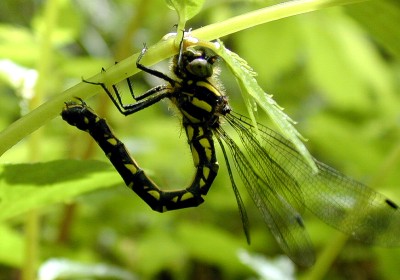 |
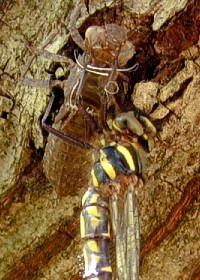 |
Epiophlebia superstes
Final renewal day of this page is February 5, 2005
English version Exuvia of Epiophlebiidae Epiophlebiidae Egg-parasitoid wasp of Epiophlebia superstes Egg of Epiophlebiidae Epiophlebia superstes 2
Epiophlebia superstes is belonging to Epiophlebiidae of Anisozygoptera. One species of dragonfly that belongs to Anisozygoptera is distributing in Japan. The dragonfly that belongs to Anisozygoptera is distributing 2 species in the world. Epiophlebia superstes is distributing it in the headwaters in a forest widely. The flight period in Kinki area is June from May.
|
Oviposition |
Emaergence |
 |
 |
| Larva The larva of Epiophlebia superstes is discovered with face under the stone of a fast flow. When When we touch them they make sound. |
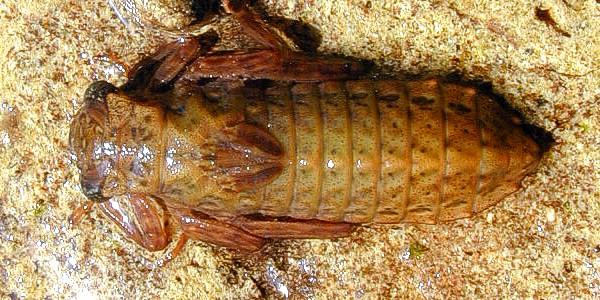 |
|
Embryonic development The egg period of Epiophlebia superstes is about one month. An egg period changes by water temperature. At average temperature 27.1℃ the average egg period was 18th. 1:The 2nd day after oviposition 2:The 9th day after oviposition 3:The 12th day after oviposition 4:The 14th day after oviposition 5:The 18th day after oviposition |
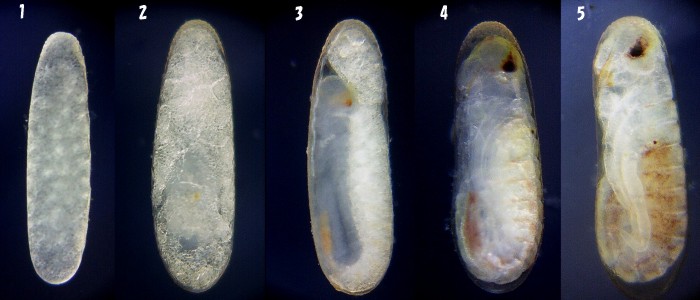 |
| Hatching 1:Before hatching 2,3:Prolarva that goes out from the egg 4:Prolarva Time when it needs to 2 to 4 was about 30 seconds. 5,6,7,8: First instar larva that goes out from the prolarva The time when it needs in 5〜7 was about 90 seconds. The prolarva of Epiophlebia superstes jumps from the stalk of a plant and reach on the water. After that, the time when it needs is 30 minutes from several minutes to become a first instar larva. |
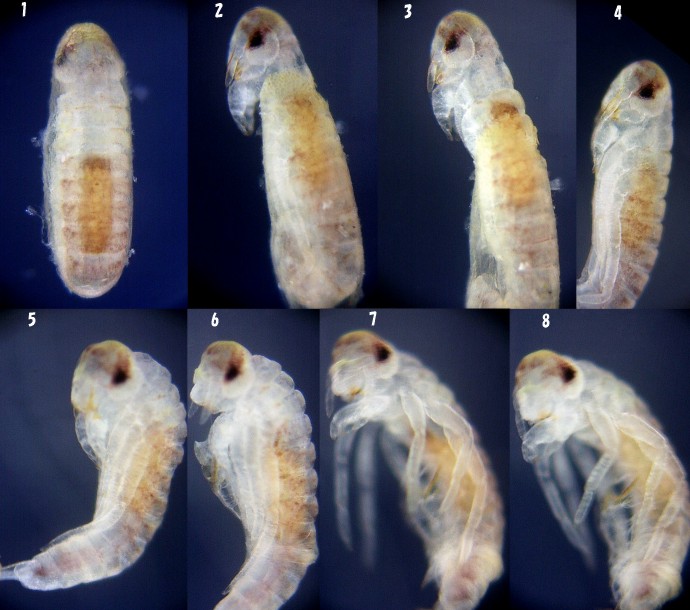 |
|
Prolarva/first instar larva
Epiophlebia superstes lays eggs to the plant that is in a higher position
than the surface of the water. The prolarva that hatched repeats a jump and
arrive on the water. Until it reaches on the water it does not become a first
instar larva. The time of the prolarva is a dozens minute from several minutes.
The period of the prolarva is longer than other dragonflies. 1:Prolarva that goes out from a plant (Elatostema umbellatum) 2:Prolarva The tail edge of the prolarva of Epiophlebia superstes is sharp. 3,4: First instar larva Size: body length 1.24mm, head wide 0.40mm, antenna length 0.21mm. |
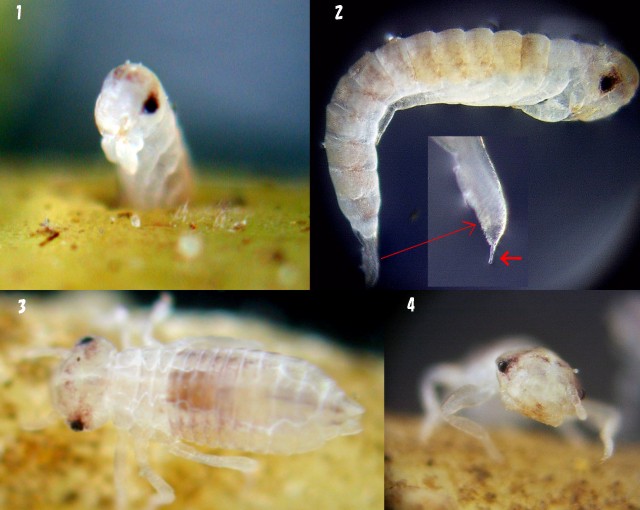 |
|
Micropyle The
micropyle of Epiophlebia superstes is lining up to a circle in the place
where parted a little bit from an anterior pole. The micropyle number of
Epiophlebia superstes is more compared with other dragonflies. It is
difficult to be seen the micropyle of Epiophlebia superstes. It becomes
easy to seen micropyle of Epiophlebia superstes to middle period of
embryo development.
1: Place which has a micropyle 2: A micropyle has been shown with an arrow. 3: We can see a micropyle when we see it from right above of an anterior pole, if we are the first term of embryo development. 4: We can see 11 micropyles in the figure. The micropyle number of Epiophlebia superstes differs by an individual and are 10〜15 pieces. The micropyle number of the average of Epiophlebia superstes was 12.7 pieces. |
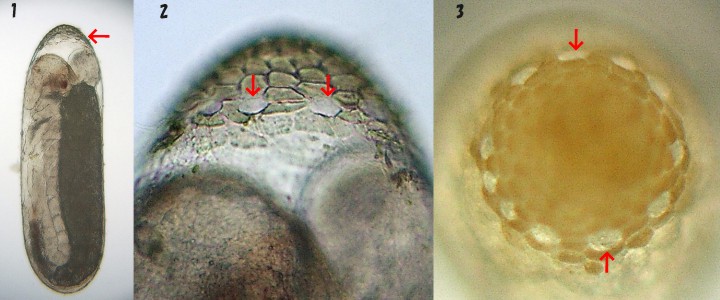 |
|
Egg-parasitoids wasp The egg-parasitoids wasp of Mymaridae is parasitic on Epiophlebia superstes. 1:Emaergence several days ago 2:Female of the egg-parasitoids wasp which breaks the egg shell of Epiophlebia superstes and appear 3: Female in an oviposition action |
|
|
| 4: Pupa of the egg-parasitoids wasp in the plant and eggs of Epiophlebia superstes in the plant The egg of Epiophlebia superstes is whitish. However, the pupa of the egg-parasitoids wasp is yellow. The pupa of the egg-parasitoids wasp becomes dark after that it becomes red. 5:Several pupae of the egg-parasitoid wasps and several eggs of Epiophlebia superstes |
 |